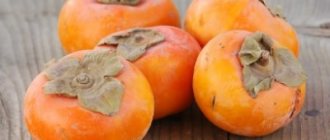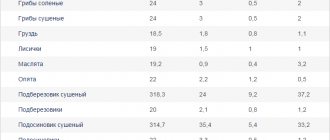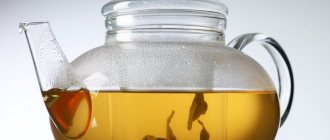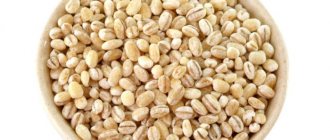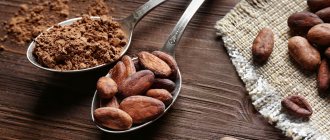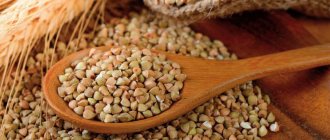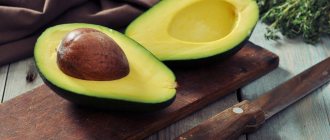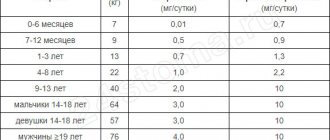Peas are most often used to prepare legume dishes for children. Not surprising, because this vegetable is so healthy that there is no need to advertise it. This hypoallergenic culture contains, first of all, protein, consisting of amino acids, so necessary for a child's growing body. Peas contain many microelements such as folic acid, iodine, phosphorus and calcium. The benefits of these components are difficult to overestimate: they are excellent stimulants of brain function, participate in the formation of bone tissue, and have a beneficial effect on blood and blood vessels.
Peas are a very valuable legume
Selenium and carotene, which are contained in the vegetable, prevent the formation of malignant tumors. Pea dishes help you always be in good shape and quickly restore strength after physical activity. Therefore, children's doctors and nutritionists advise including this healthy vegetable in the diet.
The benefits of pea soup for baby nutrition
Peas are essential for the body of both adults and especially children. It is a very valuable source of a large number of vitamins, vegetable protein and fiber. They make puree, soufflé, and porridge from this vegetable, but soup is considered the most popular dish because it is very tasty, nutritious and healthy. It is cooked and eaten with pleasure in many families.
Pea soup is a healthy and nutritious dish
Summary for parents
Green peas are a healthy vegetable that will provide the child not only with vegetable proteins, but also with vitamins and minerals. In terms of protein content, peas can be compared to beef.
The vegetable can be used as early as 8 months for complementary feeding. The product practically does not cause allergies, improves digestion (relieves constipation).
You can give your child green peas throughout the year, using frozen vegetables or a ready-made industrial product for baby food.
Nutritionist S.G. Makarova tells when you can introduce legumes into a child’s diet:
At what age should you introduce complementary foods?
At what age can you give persimmon to a child?
If there is a baby in the family, then the parents naturally ask: “At what age can you give pea soup to a child?” Without questioning the benefits of this dish, pediatricians still do not recommend including it on the menu of an infant up to one year old, some even up to two years old. Such restrictions are due to the fact that the baby’s digestive system is not yet ready to accept and digest a new product. Early introduction of pea dishes into the baby's menu is accompanied by such unpleasant and even painful side effects as severe gas formation, colic, cramps and pain in the baby's tummy. Often such symptoms are accompanied by diarrhea and weakness.
Breast-feeding
If the mother of a baby is breastfeeding, then she should know when to include legumes in her own menu. This is a controversial question with no clear answer. Some pediatricians allow mothers to introduce pea dishes into the menu during breastfeeding when the baby is two months old.
It all depends on the reaction of the baby’s body. The components of peas get into the milk, and the baby also receives them during feeding. The process of their assimilation is unpredictable: it may not have any unpleasant consequences, but more often it is painful. It all depends on how developed the enzyme system is in the child’s intestines. Usually at two months his gastrointestinal tract is not ready for such experiments. Therefore, you should not rush, but add pea soup to your mother’s menu when the baby is 3 months old.
Artificial feeding
If the baby is bottle-fed, then introducing pea dishes into his complementary foods is generally contraindicated. This is explained by the fact that during the absorption of beneficial substances from peas, there are not enough proteins in the baby’s intestines that contribute to its complete and high-quality processing. The result is flatulence and abdominal pain. For this reason, Dr. Komarovsky does not recommend consuming both peas and all legumes (beans, soybeans, beans) before the child is 1-2 years old.
Beginning of introducing peas into complementary foods
How to properly prepare pea soup for a child
After parents have figured out when to give their child pea soup, they need to get acquainted with the recipes for its preparation. Only strict adherence to the rules and standards of cooking will help make the dish tasty and healthy.
A child does not eat pureed meat - how to teach it, what to replace it with
Traditionally, split pea soup for adults is made with smoked ribs. But this option is not for kids. There is a strict ban on certain products:
- smoked meats;
- fatty meats;
- seasonings and spices;
- store-bought dry broths;
- excess salt;
- products that cause an allergic reaction.
Allowed:
- vegetable, chicken or rabbit broth;
- vegetables (carrots, zucchini, onions), fresh herbs;
- butter (if cooked in vegetable broth).
There are many recipes for making pea soup. Here is one of them, the simplest one, which can be fed to a one-year-old child.
Cooking rules
If the child is under three years old, it is better to prepare the soup with a second broth, chicken or beef. The second broth is prepared from finely chopped pieces of meat as follows. First, it is filled with cold water, brought to a boil and removed. Then it is thoroughly washed under running cold water, placed in a saucepan and poured with boiling water. After boiling, cook over low heat for half an hour. This cooking method ensures the purity of the meat broth.
In order for the peas to cook quickly, you need to sort them out and clear them of debris, rinse them several times and soak them overnight in cold water. Vegetables that cook quickly are added to the soup last, a few minutes before the end of cooking - this will help retain more vitamins.
Advice. For a baby up to one year old, you can prepare a dish without potatoes - such a soup will be easier for the stomach to digest and assimilate.
The last condition is that for a child 1-1.5 years old, it is better to grind pea soup in a blender to the consistency of puree. Over time, when his intestines easily absorb the new product, you can give it in the form of regular soup.
Pea soup recipe for baby
Products:
- 300 g homemade chicken fillet without skin or lean beef;
- 300 g green peas;
- 1 carrot;
- ½ small zucchini;
- 1 onion;
- fresh parsley or dill.
Preparation:
- Boil the meat in the second broth until fully cooked (30-35 minutes).
- Remove it, add the peeled and diced zucchini and cook for 10 minutes.
- Wash young green peas, place in boiling broth and simmer for 5 minutes.
- Finely chop the cooked meat and place it in the pan.
- Stew the carrots and onions in the broth, add to the boiling soup and after 5 minutes turn off the heat.
- “Convert” the contents into puree soup. Before serving, you can add chopped herbs.
Green pea puree soup
Norms of complementary feeding with pea soup by month
From what month can you give your baby a banana?
If we talk about age restrictions for using pea soup, it is recommended to start feeding your baby at one year of age. Even if you follow some recommendations that advise starting to eat peas along with other vegetables at 7-8 months of age, its amount in dishes should not exceed a third of the total weight.
Need to know! Some mothers, wanting to gradually accustom their baby to peas, begin to give the product in small portions from 9-10 months. Such an experiment will be undesirable if after the test the baby begins to refuse food or experience discomfort. You should wait - the child’s ventricle is not yet ready to receive new food.
What are the standards for feeding pea soup, and how much can you give it? It all depends on the reaction of the child’s body to taking new food. One baby easily perceives and digests a new dish for him, which means he is ready to gradually introduce the product into the diet. Another baby has a bloated tummy, loose stools, and even vomiting - he needs to postpone taking legumes for a month or two.
The general rule for all mothers is that you should not force your baby to accept a product that is new to him. You need to start with 1-2 spoons, then take a break and observe the baby’s condition. If the baby accepts pea soup well, gradually increase the dose.
In any case, you can include pea soup on the menu even after 1.5-2 years of the baby’s life no more than 2 times a week. If, up to the age of 3, children can be given products made from green, fresh or frozen peas, then later on they should begin to introduce children to dry split peas. The heat treatment of the product will be much longer so that children's stomachs do not suffer from indigestion or flatulence.
Composition and calorie content
The chemical composition of green peas is rich. It contains many substances that are beneficial to the child’s body and ensure the normal function of internal organs.
Its energy value is low: 100 g of fresh vegetable contains about 80 kcal (canned green peas contain only 55 kcal/100 g, and mature dry peas contain about 300 kcal).
The nutrients of green peas are (per 100 g):
- vegetable proteins – 5.2 g;
- carbohydrates – 13.6 g (including fiber 4.5 g);
- fats – 4 g;
- water – about 80 g;
- ash – 0.7 g.
Proteins include:
- Ten essential amino acids:
- valine;
- leucine;
- arginine;
- histidine;
- methionine;
- lysine;
- tryptophan;
- trionine;
- phenylalanine;
- isoleucine.
- Eight nonessential amino acids:
- glutamic acid;
- alanine;
- aspartic acid;
- proline;
- glycine;
- cysteine;
- tyrosine;
- serine
Carbohydrates are represented, in addition to dietary fiber and starch, by simple sugars:
- fructose;
- sucrose;
- maltose;
- glucose.
Fats contain saturated and unsaturated fatty acids.
Green peas contain vitamins:
- fat-soluble (, K, , alpha- and beta-carotene);
- water-soluble (B1, B2, B4, B5, B6, B9, PP, ).
Macroelements of peas are calcium, phosphorus, potassium, sodium, magnesium.
Microelements: manganese, zinc, iron, selenium, copper.
Nutritional problems when feeding pea soup
When creating a menu for a baby in the first and subsequent years of his life, you need to be attentive to his body’s reaction to any product. This especially applies to legumes. Despite their invaluable benefits, there are possible contraindications for use.
Peas should not be consumed by children who have gastrointestinal diseases, ulcers, gastritis, or frequent increased gas formation. If there are impaired renal function, a doctor's consultation is necessary.
Flatulence is the reason why a baby refuses pea soup
To summarize, we can highlight several points about the use of pea soup in childhood:
- Recommended use from 1.5-2 years of age.
- It is recommended to prepare it using vegetable broth (especially in a year and a half).
- Choose lean meat for the dish.
- Prepare pea soup with meat in the second broth.
- Do not use spices, salt – in minimal quantities.
- Before feeding, beat until pureed.
- Include no more than 2 times in the weekly diet.
- Do not use smoked products or dry seasonings for cooking soup.
If the general requirements are met, pea soup will become your child’s favorite healthy dish.
Possible harm
For children under 2 years of age, it is better to chop green peas to prevent the child from choking. During the first 2 years, it is recommended to feed green peas after heat treatment (boil or stew them) to facilitate the absorption of plant proteins.
- If a child has manifestations of colitis (inflammation of the intestines), a tendency to diarrhea and bloating (flatulence), the green vegetable should be given with caution, as it can aggravate the process.
- Bloating and colic in a baby can occur with excessive consumption of green peas.
- Green peas are contraindicated for children with kidney disease due to their high content of purines - special substances that turn into uric acid when broken down. Salts of this acid (urates) can form stones.

